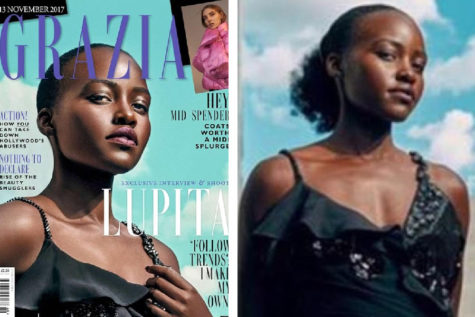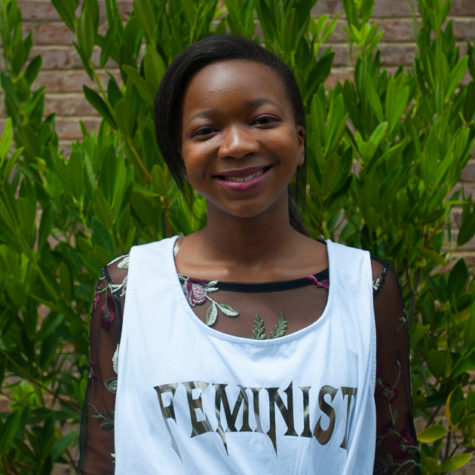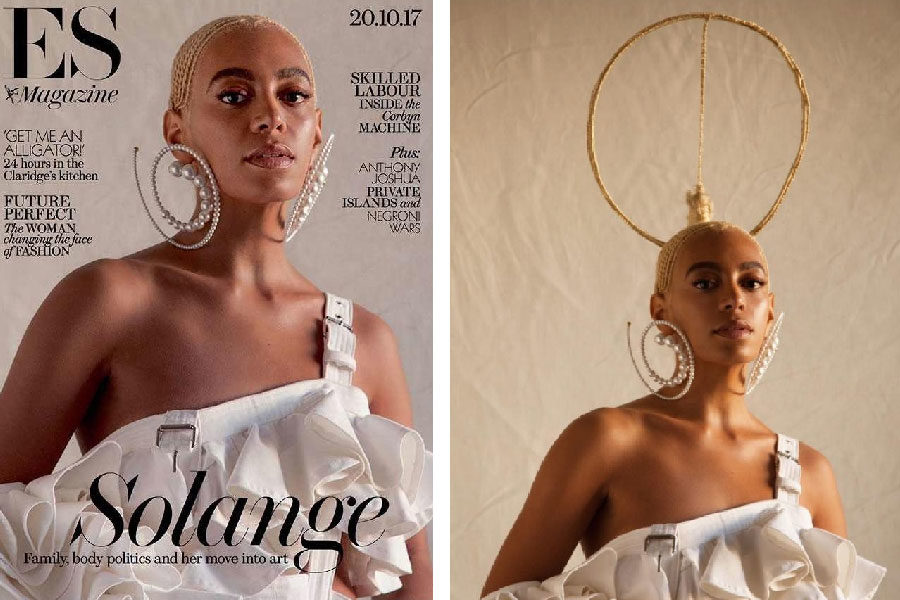Black women misrepresented in magazines
From boxer braids to blown-out afros, black women have rocked hundreds of hairstyles. Over the course of history, black hair has taken on different meanings. During the times of slavery, boxer braids were used to map out escape routes from plantations. In the 1960’s, afros came to symbolize black love and beauty, commonly used by the Black Panther Party. Now, black hair is seen as “unprofessional” or “nappy”, despite its cultural and historical value. This is what Solange portrays in her song ‘Don’t Touch My Hair’, which reveals the pride black women take in their hair, regardless of what society believes. The hair journey of black women is unique and describes the process of becoming who we truly are. Sadly, the hair of black women is constantly seen as something that needs to conform to Eurocentric beauty standards. The popular use of Photoshop disfigures the presentation of black women and has been used to push conformity onto them.
Solange, sister of Beyonce, is a neo-soul artist. According to The Washington Post, Britain’s ES magazine cropped out a golden braided halo over Solange. The photo captured an ethereal image of Solange. Controversially, its religious implications were called into question by the magazine. When Solange made her debut on the cover of ES magazine, her braided halo had been removed from the photo. The magazine, however, stated that “the decision to amend the photograph was taken for layout purposes” and, subsequently, apologized for the removal of this essential piece of the photo. Solange responded simply with the acronym “dtmh”, which stands for “don’t touch my hair”. Solange is not the only artist that forbids the media from messing with her image.
 Lupita Nyong’o is a Mexican-Kenyan Academy Award-winning actress. She’s acted in many different movies from Star Wars: The Force Awakens to 12 Years a Slave. She’s not a stranger to the front cover of a magazine, so when another United Kingdom magazine, Grazia, altered her hair, she and her fans were shocked. Her hair was in a low tuck ponytail that showed her natural hair. The photo was edited to smooth down her hair and remover her natural hair. Again, the magazine apologized. According to CNN, the magazine said that “at no point did [it] make any editorial request to the photographer for Lupita Nyong’o’s hair to be altered.” Nyong’o responded criticizing the magazine using the hashtag “dtmh”, as well. A common trend of American and European beauty magazines is to lighten the skin of darker women, but now, black women’s hair is the focus of criticism in the media.
Lupita Nyong’o is a Mexican-Kenyan Academy Award-winning actress. She’s acted in many different movies from Star Wars: The Force Awakens to 12 Years a Slave. She’s not a stranger to the front cover of a magazine, so when another United Kingdom magazine, Grazia, altered her hair, she and her fans were shocked. Her hair was in a low tuck ponytail that showed her natural hair. The photo was edited to smooth down her hair and remover her natural hair. Again, the magazine apologized. According to CNN, the magazine said that “at no point did [it] make any editorial request to the photographer for Lupita Nyong’o’s hair to be altered.” Nyong’o responded criticizing the magazine using the hashtag “dtmh”, as well. A common trend of American and European beauty magazines is to lighten the skin of darker women, but now, black women’s hair is the focus of criticism in the media.
Eurocentric beauty standards are commonplace in America and Europe. The problem with these standards is that they use this one set of standards to judge all women, and only white women are actually able to live up to this standard. As a result, many black and brown women grow up feeling as if they aren’t beautiful. The unaltered images of women like Solange and Nyong’o help defeat this beauty standard, but even they aren’t exempt from the pressure of these standards. Nyong’o wrote, “there is still a very long way to go to combat the unconscious prejudice against black women’s complexion, hairstyle, and texture,” in her reaction to Grazia magazine. The beauty industry continuously dismisses the hair of black women and labels it as “unprofessional” or “unkempt”.
The experience Solange and Nyong’o have had with these beauty magazines should make individuals more aware of the Eurocentric beauty standards and how to dispel them for future generations. Representation in the media lets girls and women recognize that they, too, are beautiful and deserving of the spotlight. It’s up to magazines like Grazia and ES Magazine to show that black women and their hair are not things to be censored, lightened or erased but beautiful in their own right.





